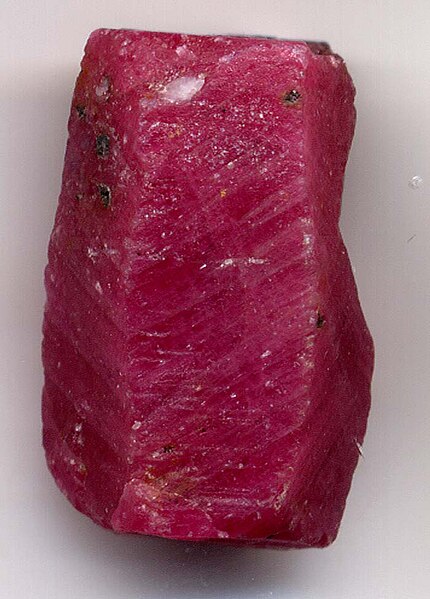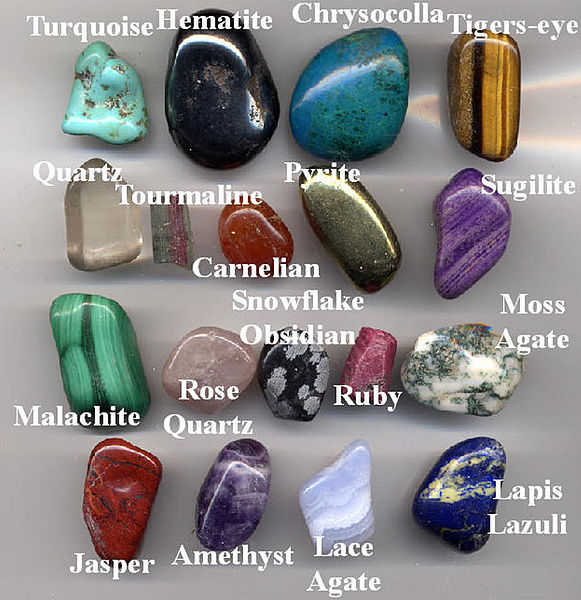A ruby is a pinkish red to blood-red colored gemstone, a variety of the mineral corundum. Ruby is one of the most popular traditional jewelry gems and is very durable. Other varieties of gem-quality corundum are called sapphires. Ruby is one of the traditional cardinal gems, alongside amethyst, sapphire, emerald, and diamond. The word ruby comes from ruber, Latin for red. The color of a ruby is due to the element chromium.
A ruby crystal from Dodoma Region, Tanzania
Main ruby producing countries
Crystal structure of ruby showing the substitution of Al3+ ions (blue) with Cr3+ (red). The substitution density of Cr3+ ions in this model is approximately 2%, approximating the maximum doping normally encountered.
A naturally occurring ruby crystal
A gemstone is a piece of mineral crystal which, when cut or polished, is used to make jewelry or other adornments. Certain rocks and occasionally organic materials that are not minerals may also be used for jewelry and are therefore often considered to be gemstones as well. Most gemstones are hard, but some softer minerals such as brazilianite may be used in jewelry because of their color or luster or other physical properties that have aesthetic value. However, generally speaking, soft minerals are not typically used as gemstones by virtue of their brittleness and lack of durability.
A collection of gemstone pebbles made by tumbling the rough stones, except the ruby and tourmaline, with abrasive grit inside a rotating barrel. The largest pebble here is 40 mm (1.6 in) long.
Spanish emerald and gold pendant at Victoria and Albert Museum
Enamelled gold, amethyst, and pearl pendant, about 1880, Pasquale Novissimo (1844–1914), V&A Museum number M.36-1928
A diamond cutter in Amsterdam








